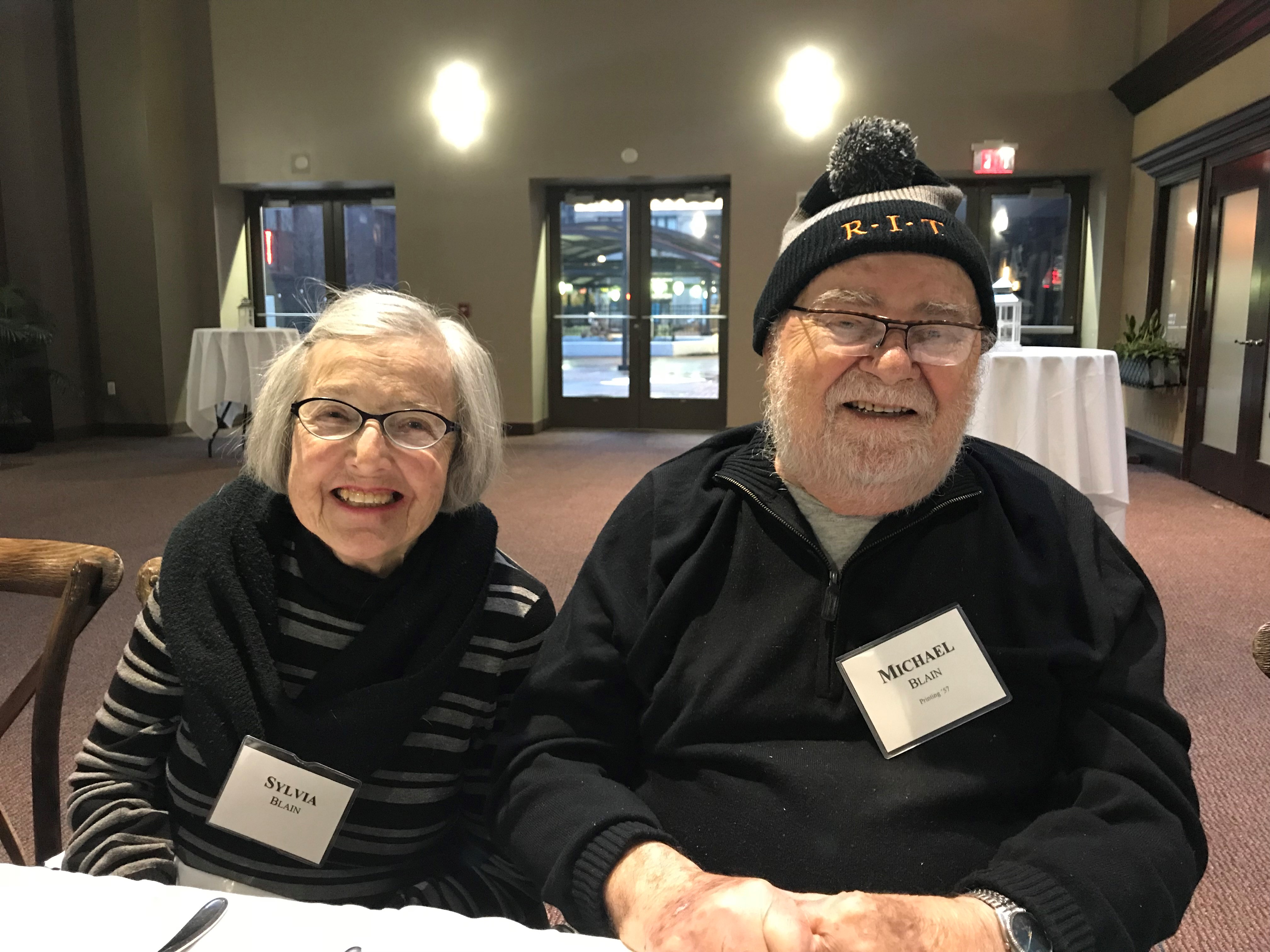Tiger Heritage Spotlight: Michael Blain BS '57
Michael was born in Czechoslovakia. During World War II, he moved to Budapest to evade the Nazis. After the war, he was able to find his two surviving siblings. He eventually moved to New York to find his sister, only to be drafted in the Korean War. When the Korean War ended, he was accepted into RIT's printing program. Michael met his wife, Sylvia, in Highland Park after a synagogue service. They have been married for over 60 years.
Make an impact in RIT's Jewish Community
Tell us about your family life before and after the war.
I had a large family compared to today’s standards. I was one of seven siblings. I was raised in a tiny Carpathian town of Selce (today this is known as the Ukraine), in Czechoslovakia. Before the Nazi occupation of my country, Czechoslovakia I was 11 years old. I had a good, but hard childhood. I attended public school in the morning and Hebrew school in the afternoon. Each day after school we all helped with maintaining the family farm with chores.
At the age of 14, school ended for everyone. After that, you were expected to find work to help the family (and yourself). Most boys would leave for a larger city and the closest city to my hometown was Budapest – so there I went to find work. I found a job making ladies' purses. The funny thing was I didn’t know what a purse was because my mother never owned one.
In retrospect, moving to Budapest saved my life. For some reason, the Jews in Budapest weren’t as affected by the occupation. I, along with others hid. There were Jewish sympathizers that helped when they could. Back in my town, the Nazis rounded up all of the Hungarian Jews in my homeland and shipped them to labor camps in Auschwitz. My entire family was shipped to Auschwitz. At the age of 15, while I was still in Budapest, a group of us were discovered by Hungarian soldiers and we thought that was it for us. It turns out they were Jews who had somehow acquired the military uniforms and helped us cross borders to get out of harm’s way. This happened more than once.
Of the 13 members of my immediate and family, I am only one of three to survive the Holocaust. I know that my survival was due to a number of lucky breaks, including leaving Czechoslovakia and moving to Budapest, Hungary, at the age of 14.
January 15, 1945, we were liberated by the Russian troops and I immediately went back to my birth village, only to be greeted by anti-Semitic neighbors. I had discovered that my parent’s home had been looted. As I walked the village, I noticed some of my family’s items at the homes of my neighbors; these were people that I had known my entire life. They removed our windows, doors, and furniture. I remember asking if I could have a few of my family’s things back and was told, “I’d rather burn it than give it back to a Jew!” My feelings were hurt. These were people that I had known.
Later, with the help of the Red Cross I was able to locate my surviving two siblings; my brother and my sister. My brother arrived back home six months after me, and we found out that my sister, who had been in southern France was now in New York.
My brother and I were part of a group of 100 orphaned Holocaust children that were taken to England. Once there, I once again began to make women’s purses and I also attended school because I knew one day I wanted to go to college.
Once arriving in the US, what led you to RIT?
In 1949 I moved to New York, where my sister awaited me; later I was drafted by the U.S. Army to fight in Korea. In 1954, after returning from the Korean War, I became a US citizen. I still had earning my college degree in my sites. My interest in the printing industry led me to a job in Virginia. While there, a supervisor suggested that if I was serious about a career in printing that I should apply to a school in upstate New York called Rochester Institute of Technology. I enrolled and was accepted without ever seeing the city or the campus (which was downtown at the time).
During my first year, I became very involved in student organizations. One of the organizations that I was involved in was Hillel at the University of Rochester. I liked attending their Hillel events, but I wanted to have our own at RIT. With the encouragement of the campus chapman’s I started our own Hillel.
Tell us about life post-RIT.
I met my wife, Sylvia, while walking in Highland Park after synagogue. I spoke to her, but she thought I was faking my accent. She said it was “love at first sight” once she found out that my accent was not pretend.
Why are you choosing to share your story? Is there anything you want people to learn about your story?
During the war and after the war I always remember love. Always love. My wife Sylvia and I have been married for over 60 years. We have 3 sons, 12 grandchildren, and now 19 great-grandchildren (there will be an additional 3 in a couple of months). We have had a good life. We have a big family. Many Jewish families are committed to having large families to make up for the many that were lost during the Holocaust.
I would like to leave all who read this with, “Don’t forget what you can do for your country to make it a better place”.








